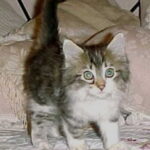As a Mainer, or “Mainah” as the local tongue would have it, I was a sort of oddity in that I had never, until yesterday, gone to the Fryeburg Fair. Going to the fair is one of the things you’re just expected to do if you live in Maine, at least once in a while. As such, I guess it was only a matter of time until I broke down and committed to going. This was the case last Friday, when a bunch of my friends from school bludgeoned me (verbally, of course) into accompanying them to the event.
According to the website, the Fryeburg Fair is “Maine’s Blue Ribbon Classic Agricultural Fair”. As a southern Mainer, I don’t have everyday contact with the traditional farm-oriented way of life that many people think of when they hear the word “Maine”, and I was somewhat unsure of what to expect. According to those who had been to the fair before, it produces many prime examples of traditional Maine practices, past-times, and people. Some even went as far as to call it a redneck fest.
Before I continue, here’s a little background information. The Fryeburg Fair started in 1851 as a small gathering of local farmers and merchants who wanted to show off the products of their hard work. Since then, the fair has grown to include the participation of not only the town of Fryeburg but many neighboring Maine and New Hampshire towns. Even people from out of state come to take part in the festivities, which span eight days total. The agenda is different every day, so many people go multiple days in order to see it all.
Ok, so I heard that things get busy fast at the fair, depending on which day you go to, so we decided to leave early. It was a good choice–when we got there, the frozen lines of cars extended for miles. It was quite a sight, considering it was in the middle of rural Maine. I had checked the fair’s website earlier, and it had said to park on the outskirts and walk. We did, and it turned out to be a good idea, because we passed hundreds of idling cars on our walk to the fairgrounds. The line into the place was about ten people wide and a quarter mile long. Thankfully, it moved fairly fast, as they had multiple ticket booths. Admission was eight dollars, which I don’t think is too bad for an all day event. However, as it turns out, you can expect to pay a lot more before the day is done.
The first thing I noticed was the rides–you could see them long before you got to the entrance, because they towered over everything else. They had a bunch of rides, all the mobile sort that can be trucked around, set up near the entrance. There was a ferris wheel, one of those rotor-zipper type things, and a big gravitron that spins you around so fast that you stick to the wall. Actually, there was a lot more rides than these, but I didn’t pay them too much attention. I’ve always been a bit cautious of mobile amusement parks, and these rides didn’t look all that spectacular, if you know what I mean. Still, the kids seemed to be having fun, and I guess that’s what counts.
And then, as I walked in a little farther, I saw the food vendors. Hundreds of them, maybe even a thousand. All of them operating out of those little trailer-hut jobs, selling everything from fried dough nuggets and Italian sausage to turkey legs and nitrogen-cooled ice cream. I had never seen as many food vendors in one place in my life, and I was scratching my head as to if they were all really necessary. But, there was a line at every one, so it seemed to work.
At first, I started to get a little discouraged. The more I walked, the more vendors I saw, and I started to wonder if this was all the fair was. If I had wanted to go somewhere to get fat, I could have driven five minutes from my house to McDonald’s. It would have been faster, and cheaper too–the vendors were all overpriced. I’m talking seven dollars for a bowl of soup, four bucks for a modest portion of fried dough, and two dollars for a bottle of soda. Also, it was important to compare vendors before buying, as there was occasionally a large price discrepancy for equivalent items. One place was trying to sell soda bottles for three dollars, while the hut five feet down the path was selling them for two.
But then, as we walked more, I realized the fair was absolutely huge. The vendors are only a small part of it. There are fifty or so buildings that you can walk through. Some of them are history displays, filled with old-fashioned tools and farm equipment. Others, like the sugar shack, have people demonstrating actual Maine techniques for getting things done. In the case of the sugar shack, they were making all kinds of Maine maple sugar products right there in front of me. After watching a woman use a centrifugal spinner to conjure maple sugar cotton candy seemingly out of the air, I just had to buy some and try it for myself. It was just as delicious as it looked, and was quite a steal at $2.50 (the vendors outside were selling standard cotton candy for four bucks).
It would take too long to list them all, but there were buildings dedicated to all sorts of crafts, from metalsmithing and logging to woodworking and plowing. They had it all. There were also plenty of crafts vendors hidden behind the food guys. You could buy T-shirts and lawn ornaments, wood crafts, paintings, and tools. There were rows and rows of power equipment for sale, as well as tents, saws, plows, car canopies, boats, snowmobiles, and ATVs. There were carnival games too, from skiball to quarter tossing, and plenty of people were walking around with huge stuffed animals that they had won. But, the best part was the real animals. Up to this point I haven’t mentioned them, but they were there from the start.
Once I passed all the food vendors, I ran into a wall of animals. Oxen to be specific– they were having a kind of parade around the perimeter. I’ve been around farm animals before, but never this many in one spot. I was amazed at how docile they were, considering they had hundreds of people hovering around them, petting them and trying to sneak them bits of fried dough. There were also expo buildings full of animals–some just for show, some for sale. There were goats of all kinds, sheep shorn and unshorn, and alpacas tall enough to eat your hat. There were pigs enough to feed a small country, most weighing hundreds of pounds, and enough chickens and roosters to warrant earplugs. I especially liked the ducks–they weren’t being as loud as the roosters, and there was one that had some really nice color to his feathers. But, the best part was that the fair had provided hand sanitizer stations all over the place. For some reason, being around cows just makes me feel dirty, even if I haven’t touched anything.
I sat in on three big events while I was there, the first of which was a horse race. There is an entire race track towards the back of the fairgrounds, and they had a full-blown horse and chariot race there. I had never seen a live horse race before, and although it lasted for only a few minutes, it was much more exciting standing right next to the fence than watching one on TV. The ground rumbles pretty good when the pack of them comes around the corner, and you can almost feel the wind from the horses as they pass (I was so close, I could have stuck my arm over the fence and given the guys on the chariots a high-five).
The second event was a pig show. There was only one competitor–a teen-aged girl–, so she pretty much won the blue ribbon in every category. She had three or four pigs, each a different breed, that she would walk around in front of a judge. The judge would then proceed to tell the crowd all the background information on the breed, and if the particular pig in front of him lived up to the specifications. I know nothing about pigs, but I still found it kind of entertaining–every pig she brought out immediately lost control of its bowels when it saw the crowd, and the judge had to be careful to avoid getting his shoes mucked up. By far, the best part of this show was when the girl brought out her final display–a mother pig with about a dozen piglets. There was a little kid in the pen who was helping the girl herd the pigs around, and the constant battle between piglets and the little boy with his plastic pig-plow was a fun thing to watch.
The third event was a pulling competition. This one probably stems from something people used to do to prove the strength of their work horses. In the first round, teams of two horses would pull a sled of cinder blocks (weighing more than my car at about 3800 pounds) through the dirt. The team that went the farthest in five minutes won. In the next round, it was a similar competition, but with oxen. In both cases, I was amazed at the power of the animals. I knew they were strong, but seeing them hauling a cars-worth of dead weight through the dirt was enough to redefine my appreciation of them.
There were probably a bunch of other events that went on that I get to see. I know there are special competitions held on other days, such as skillet-throwing matches for the ladies and a woodsmen’s competition for the guys. According to most fairgoers, the woodsmen’s competition is the thing to see. If you like chainsaws with small car engines attached to them, then this is where it’s at.
So, what is the final verdict? Well, I don’t think the Fryeburg Fair was a redneck fest at all. Sure there were times when busting out a banjo would have been appropriate, but it would only have been in good fun. The Fryeburg Fair is a great celebration of everything Maine, and it gives you a glimpse of what life was like, and what life is still like, for many of those who call Maine home.





